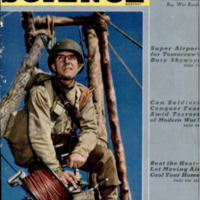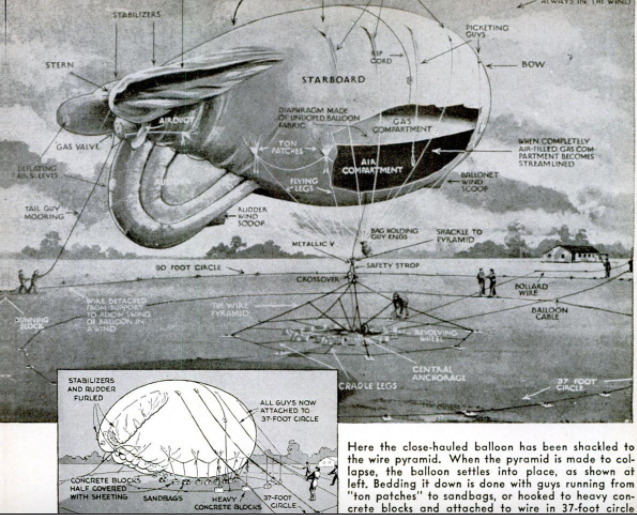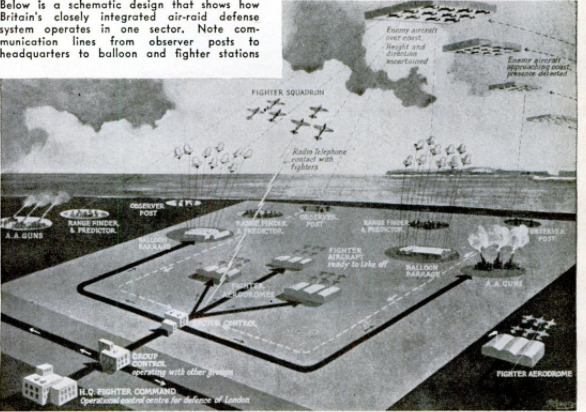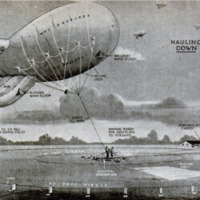British barrage-balloons
Item
-
Title (Dublin Core)
-
British barrage-balloons
-
Article Title and/or Image Caption (Dublin Core)
-
Title: British barrage-balloon secrets
-
extracted text (Extract Text)
-
OPERATIONAL details of the famous
“floating sausages” that helped Eng-
land to win the epic Battle of Britain have
now been revealed. Integral part of the
Fighter Command's close-knit air-raid de-
fense system, barrage balloons enclose
critical areas within a fence of steel cables
to hamstring low-flying enemy planes. They
fall into two categories. One type stays in
the air most of the time and is hauled down
only for repairs or reinflation, or in case of
bad weather. The other is raised only on an
“alert,” at the same time that fighter planes,
searchlights, and antiaircraft batteries
spring into action.
lethal charges of static electricity picked up
while the balloon is aloft. On signal, the
balloons shoot into the air surprisingly fast,
and their height and position are frequently
changed to alter the pattern of defense.
Nesting place for a balloon is a sunken
oval having in the center a collapsible
pyramid through which the cable runs from
the bag to the winch. The “sausage” is
hooked to the pyramid; then its two sets
of guys are made fast. The guys are held
to the fabric with “ton patches,” meaning
patches that will stand a strain of one ton.
No gas is used in the stabilizers that keep
the balloon from rolling over on its back, or
in the rudder, which keeps its nose into the
wind. Instead, air tubes run along the sides
to collect wind for this purpose. As the
balloon is hauled down into the region of
lower wind velocities, the air leaves the tail
and it collapses. The limp fabric is lashed
to the body during the bedding-down period,
and is unfurled when the balloon is raised.
(Drawings by E. G. Lambert and H. P.
Burton from the London “Sphere.”)
Each balloon is filled with 70,000 cubic
feet of hydrogen, which gives it a buoyancy
of one ton. It is held captive by a steel
cable which winds on a winch mounted on
a truck-trailer. The Waaf who operates
the winch—and many of the personnel of
the Balloon Command are members of the
Women's Auxiliary Air Force—sits inside
a cage. This not only protects her against
snapping cables, but it also grounds the
-
Contributor (Dublin Core)
-
E. G. Lambert (Illustrator)
-
H. P. Burton (Illustrator)
-
Language (Dublin Core)
-
eng
-
Date Issued (Dublin Core)
-
1943-08
-
pages (Bibliographic Ontology)
-
58-59
-
Rights (Dublin Core)
-
Public Domain (Google Digitized)
-
Archived by (Dublin Core)
-
Matteo Ridolfi
-
Marco Bortolami (editor)
 Popular Science Monthly, v. 143, n. 2, 1943
Popular Science Monthly, v. 143, n. 2, 1943






